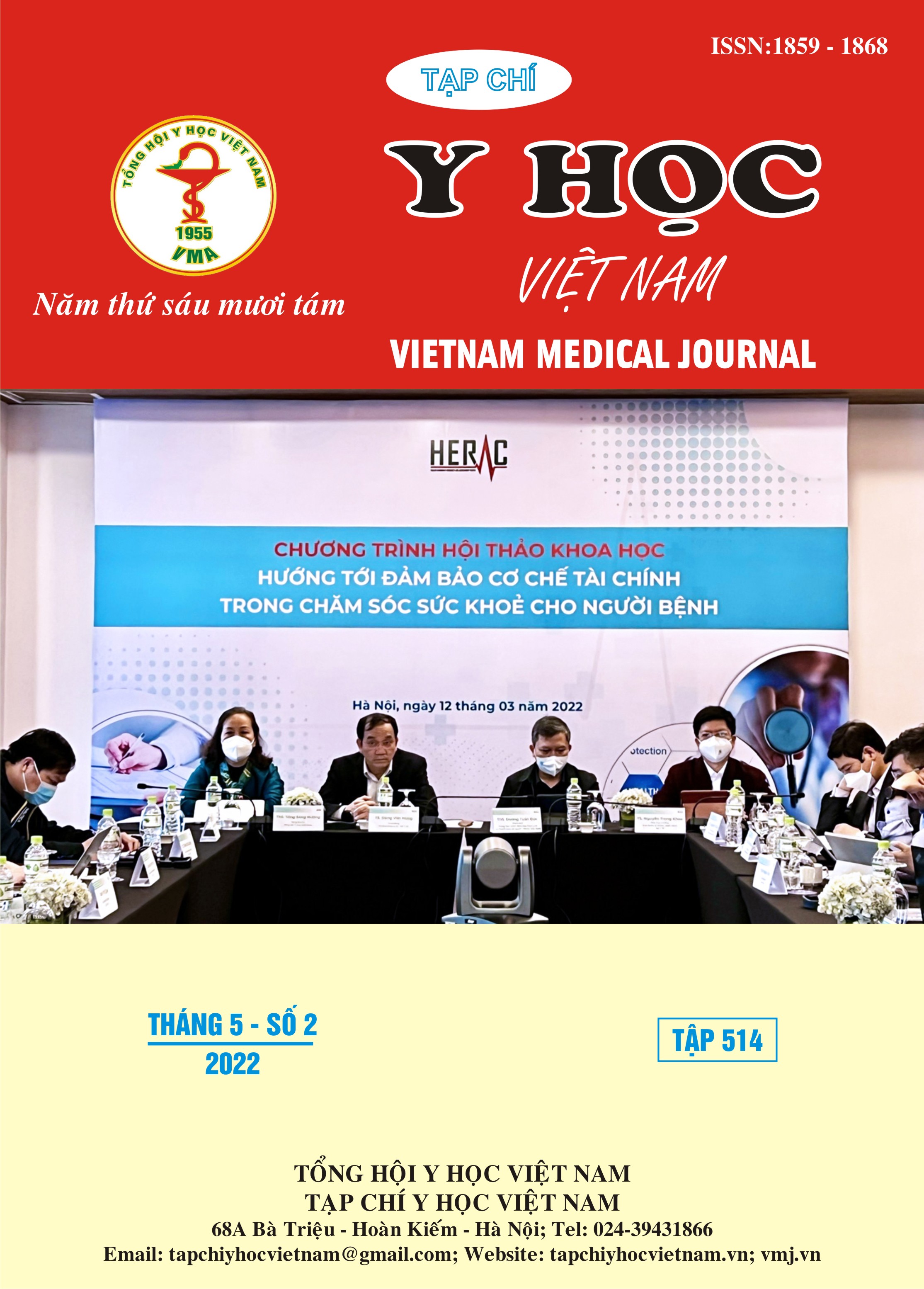COAGULATION DISORDER IN PEDIATRIC PATIENTS DIAGNOSED WITH DENGUE HEMORRHAGIC SHOCK
Main Article Content
Abstract
Objectives: To investigate the coagulation disorder in children with dengue hemorrhagic fever shock at Children's Hospital 1. Subjects and methods: Studied on 466 children diagnosed with dengue hemorrhagic fever shock admitted to Children's Hospital 1 from December 2017 to June 2019. Coagulation was performed at the time of shock (T0), 24 h (T24) and 48h (T48) after the time of shock. Results: The mean age was 9.4 ± 3.1 years old, of which 251 (53.9%) were boys. 4.7% had clinical manifestations of bleeding, of which 7 cases of gastrointestinal bleeding (1.5%), 7 cases of nosebleeds (1.5%), 2 cases of bleeding gums (0. 4%), menstruation lasted 6 cases (1.3%). During the treatment of gastrointestinal bleeding, there were 5 more cases, of which the total number of severe gastrointestinal bleeding requiring blood transfusion was 6 cases (1.3%). The average value of platelet count (unit x103/mm3) at the time of T0, 24, 48 was 38.9 ± 24.1, 27.3 ± 24.1; 36 ± 27 respectively. The rate of thrombocytopenia at time T0, 24, 48 respectively: 84.3%; 97.8% and 100%. The rate of APTT prolonging at time T0, 24, 48 was 25.4%, respectively; 78.3% and 66.7%. The rate of prolongation of PT at time T0, 24, 48 was 4.4%, respectively; 39.1% and 44%. The rate of reduction of fibrinogen < 1 g/l at T0, 24, and 48, respectively, was 3%, 54.9% and 32%. At the time of admission, there were 70 coagulation disorders (25.9%), of which 6 cases (2.2%) met DIC criteria. During 48 hours of follow-up for coagulopathy 140 (40.8%) and DIC were 39 cases (11.4%). The percentage of children requiring transfusion of erythrocytes, platelets, fresh frozen plasma, and cold precipitate, respectively, was 3.2%; 3.6%; 2.4% and 3.2%. Conclusion: Coagulation disorder had the rate of 40.8% in dengue hemorrhagic fever shock in children, in which DIC was 11.4%. Severe clinical manifestations have a low rate. The number of children requiring transfusion of blood and blood products was low
Article Details
Keywords
Dengue hemorrhagic fever, coagulation disorder, children
References
2. Cục Y Tế Dự Phòng, Bộ Y Tế (2020). Tình hình dịch sốt xuất huyết Việt Nam 1980- 2020.
3. Levi, M. (2009), "Guidelines for the diagnosis and management of disseminated intravascular coagulation. British Committee for Standards in Haematology", Br J Haematol, 145(1), p. 24-33.
4. Đoàn Văn Lâm (2013). Đặc điểm lâm sàng, cận lâm sàng và diễn tiến điều trị bệnh sốc sốt xuất huyết dengue ở người lớn. Tạp chí Y học TPHCM, 17: tr. 189-197.
5. Văn Thị Cẩm Thanh (2018). Đặc điểm lâm sàng, cận lâm sàng và điều trị bệnh nhân sốt xuất huyết dengue nặng có sốc tại Bệnh viện Nhi Đồng 2. Tạp Chí Y học TPHCM, 22(4): tr. 195-202.
6. Nguyễn Minh Tiến, Nguyễn Hữu Nhân, Lê Vũ Phượng Thy, Ngô Văn Tuấn An. (2018). Điều trị sốc sốt xuất huyết dengue kéo dài, biến chứng nặng tại Khoa cấp cứu – hồi sức Bệnh viện Nhi đồng Thành Phố. Tạp Chí Y học TPHCM, 22: tr. 89-96.
7. Adane T, Getawa S (2021) Coagulation abnormalities in Dengue fever infection: A systematic review and meta-analysis. PLoS Negl Trop Dis 15(8): e0009666. https://doi.org/10.1371/journal.pntd.0009666
8. Wills, B. (2009), "Hemostatic changes in Vietnamese children with mild dengue correlate with the severity of vascular leakage rather than bleeding", Am J Trop Med Hyg, 81(4), p. 638-644.


